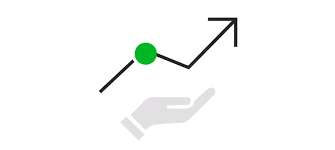Hello readers, I hope you have read our last blog on margin trading facilities. But, today we are going to talk about various types of margin in the stock market. The customer must deposit a certain amount of money with the broker in order to buy or sell stocks on the exchange. The margin is the name given to this amount of money. The degree of margin required by traders is determined by the exchange, as is the case with many other regulations, depending on the amount of volatility and volume. so let's take a deep dive into the types of margin in the stock market.
Just as we are faced with day-to-day uncertainties about the weather, health, traffic, etc, and take steps to minimize the uncertainties, so also in the stock markets, there is uncertainty in the movement of share prices. This uncertainty leading to risk is sought to be addressed by margining systems by stock markets.
Why should there be Margin?
Suppose an investor, purchases 1000 shares of ‘XYZ company at Rs.100/- on January 1, 2021. The investor has to give the purchase amount of Rs.1,00,000/- (1000 x 100) to his broker on or before January 2, 2021. Broker, in turn, has to give this money to the stock exchange on January 3, 2021. There is always a small chance that the investor may not be able to bring the required money by the required date. As an advance for buying the shares, the investor is required to pay a portion of the total amount of Rs.1,00,000/- to the broker at the time of placing the buy order. Stock exchange in turn collects a similar amount from the broker upon execution of the order. This initial token payment is called MARGIN. Remember, for every buyer, there is a seller and if the buyer does not bring the money, the seller may not get his / her money.
What are the types of margins levied in the cash market segment?
Margins in the cash market segment comprised of the following three types:
1) Value at Risk (VaR) margin:
- VaR Margin is at the heart of the margining system for the cash market segment. Let us try and understand briefly what we mean by ‘VaR’. The most popular and traditional measure of uncertainty/risk is Volatility, Technically, VaR is a technique used to estimate the probability of loss of value of an asset or group of assets (for example a share or a portfolio of a few shares), based on the statistical analysis of historical price trends and volatilities
- VaR is computed using exponentially weighted moving average (EWMA) methodology. Based on statistical analysis, 94% weight is given to volatility on ‘T-1’ day and 6% weight is given to ‘T’ day returns.
2) Extreme loss margin
- The extreme loss margin aims at covering the losses that could occur outside the coverage of VaR margins
3) Mark to market Margin
- MTM is calculated at the end of the day on all open positions by comparing transaction price with the closing price of the share for the day
What are the types of margins levied in the Futures & Options (F&O) Segment?
Margins on Futures and Options segment comprise of the following:
Initial Margin:-
The initial margin for the F&O segment is calculated based on a portfolio (a collection of futures and option positions) based approach. The margin calculation is carried out using software called - SPAN® (Standard Portfolio Analysis of Risk). It is a product developed by Chicago Mercantile Exchange (CME) and is extensively used by leading stock exchanges of the world. The SPAN® margins are revised 6 times in a day - once at the beginning of the day, 4 times during market hours, and finally at the end of the day. Higher the volatility, the higher the margins.
Exposure margin:-
In addition to the initial / SPAN® margin, exposure margin is also collected. Exposure margins in respect of index futures and index option sell positions have been currently specified as 3% of the notional value. For futures on individual securities and sell positions in options on individual securities, the exposure margin is higher of 5% or 1.5 standard deviation of the LN returns of the security (in the underlying cash market) over the last 6 months period and is applied on the notional value of the position.
In respect of Option contracts following additional margins are collected
1) Premium Margin:- The premium margin is paid by the buyers of the Options contracts and is equal to the value of the options premium multiplied by the number of options purchased. For example, if 1000 call options on ABC Ltd are purchased at Rs. 20/-, and the investor has no other positions, than the premium margin is Rs. 20,000. The margin is to be paid at the time of the trade.
2) Assignment Margin:- Assignment Margin is collected on assignment from the sellers of the contracts.
Extreme Loss Margin:-
The extreme loss margins for options and futures contracts on index and stocks are as follows:
| PRODUCT | EXTREME LOSS MARGIN |
| Index Derivatives | 2% of the notional value |
| Stock Derivatives | 3.5% of the notional value |
For this purpose, notional value means:
- For a futures contract - the contract value at the last traded price/closing price.
- For a short options contract – the value of the underlying index or the value of an equivalent number of underlying shares as conveyed by the short options contract, in the underlying market, based on the last available closing price.
The margin on consolidated crystallized obligation
The margin on consolidated crystallized obligation in derivatives represents:
ON INTRADAY BASIS | crystallized obligations based on the closed-out futures positions and it is payable/receivable premium at the client level. |
| AT END-OF-DAY | Obligations at client level considering all futures and options positions. |
Intraday basis:
On an intraday basis, the net payable/receivable amount at the client level is:
- The premium payable/receivable.
- Futures crystallized profit or loss (calculated based on weighted average prices of trades executed).
If the overall amount at the client level is payable, such amount is the intraday consolidated crystallized obligation margin for the client.
End-of-day basis At the end of the day, the payable/receivable amount at the client level shall be calculated using:
- Futures mark to market profit/loss to be settled
Options premium payable/receivable
Options exercise/assignment for expired contracts
Futures final settlement for expired contracts
If the overall amount at the client level is payable, such amount is the end-of-day consolidated crystallized obligation margin for the client. The margin on consolidated crystallized obligations shall be released on completion of settlement.
MTM (Mark-To-Market) Losses:
Mark to market loss is calculated by marking each transaction in security to the closing price of the security at the end of trading. The mark to market margin (MTM) is collected from the member before the start of the trading of the next day. At every End of the day, the difference of the cost bought/sold vs Closing price calculated and the Loss so on the said position is considered as MTM loss.
Delivery margins for Physical Settlement in Equity Derivatives:
Any outstanding position in the Equity Derivatives converts and marked to Delivery on Expiry date if it is still outstanding. It is also called a Delivery Margin on Physical Settlement. The exchange has mandated that long call and put options will require margins to be blocked. These margins are called Delivery margins and will be applicable from 4 days before expiry. The delivery margin would be released once the physical settlement process is completed.
PEAK MARGIN
With the guideline issued by SEBI, Brokers need to collect upfront margins in the form of funds/securities by way of Fund transfer or Margin Pledge (Specifically read as Clear Funds &/or Securities) to execute any transactions. It has primarily to restrict from providing additional leverage over and above what VAR+ELM ( with minimum 20% for stocks) and SPAN + Exposure (F&O – Equity, Commodity, Currency) already offer.
Starting Dec 1st, 2020, the maximum intraday leverage that can be offered by a broker will be restricted and this maximum leverage will keep reducing until Sep1’st 2021 post which a broker can give maximum leverage = VAR+ELM(min 20%) or SPAN+Exposure. Until now, the reporting for margin requirements happened based on end-of-day positions.
Based on these positions, the exchange was imposing a margin on the customer. Under peak margin reporting, Exchange shall send 4 Snapshots in a day on scheduled time (In a random, system-driven process). At the end of the day, Exchange will consider the maximum margin across that 4 snapshots/Margin files for any client which will be considered as Peak Margin.
Calculation:
- EOD margin obligation of the client shall be compared with the respective client margin available with the TM/CM at EOD.
- Peak margin obligation of the client/TM/Custodial Participant, across the snapshots, shall be compared with respective client/TM/Custodial Participant peak margin available with the TM/CM during the day
Higher the shortfall in collection of the margin obligations at (a) and (b) above, shall be considered for levying of penalty as per the extant framework.
- Dec 2020 to Feb 2021 — Penalty if margin blocked is less than 25% of the minimum 20% of trade value (VAR+ELM) for stocks or SPAN+Exposure for F&O.]
- March 2021 to May 2021 — penalty if margin blocked less than 50% of the minimum margin required.
- June 2021 to Aug 2021 — penalty if margin blocked less than 75% of the minimum margin required.
- Sept 2021 — penalty if margin blocked less than 100% of the minimum margin required.
So, this is it about types of margin in the stock market. let us know how was it by commenting below. and explore more opportunities to invest and grow by Clicking here.







_60c60284574c0.jpg)